Cleaning habits and product preferences often evolve across generations, influenced by new technologies, environmental concerns, and marketing trends. While some classic cleaning products have stood the test of time and remain popular across all age groups, others have become more closely associated with the Baby Boomer generation. These products, often trusted for their effectiveness and familiarity, might not be as widely used or recognized by younger generations who have grown up with different cleaning solutions. Exploring these generational preferences offers a glimpse into how cleaning practices have changed over the decades.
1. Ammonia
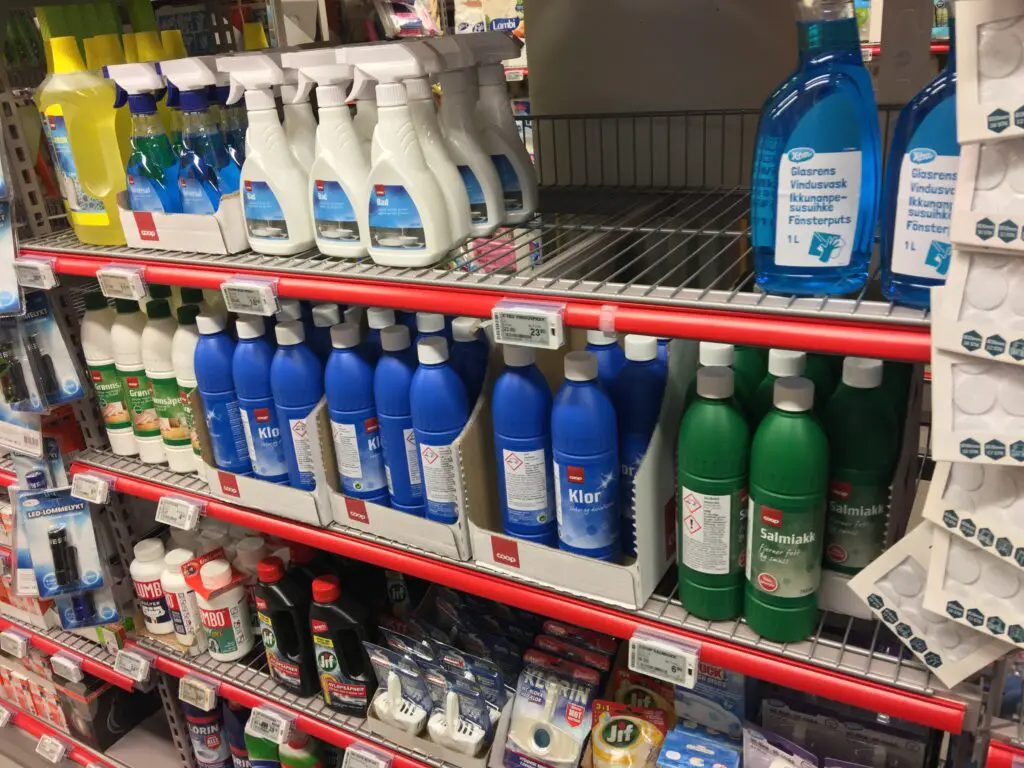
Ammonia, a strong alkaline cleaner, was a common household staple for many years, particularly favored by the Boomer generation for its powerful cleaning and degreasing abilities. According to The Spruce, ammonia is recommended for tasks like cleaning ovens, floors, and windows. However, its strong odor, potential for respiratory irritation, and the availability of less harsh alternatives have led to its decline in popularity among younger generations. Many modern cleaning guides now recommend safer and more user-friendly options.
The strong fumes of ammonia require careful ventilation and caution during use, factors that can be less appealing to younger consumers who often prioritize ease of use and milder formulas. Additionally, the potential for dangerous reactions when mixed with bleach is a significant concern that has contributed to its decreased use. While Boomers may still rely on its powerful cleaning action for certain tough tasks, many younger generations opt for products perceived as safer and more convenient for everyday cleaning.
2. Bleach (for Everything)
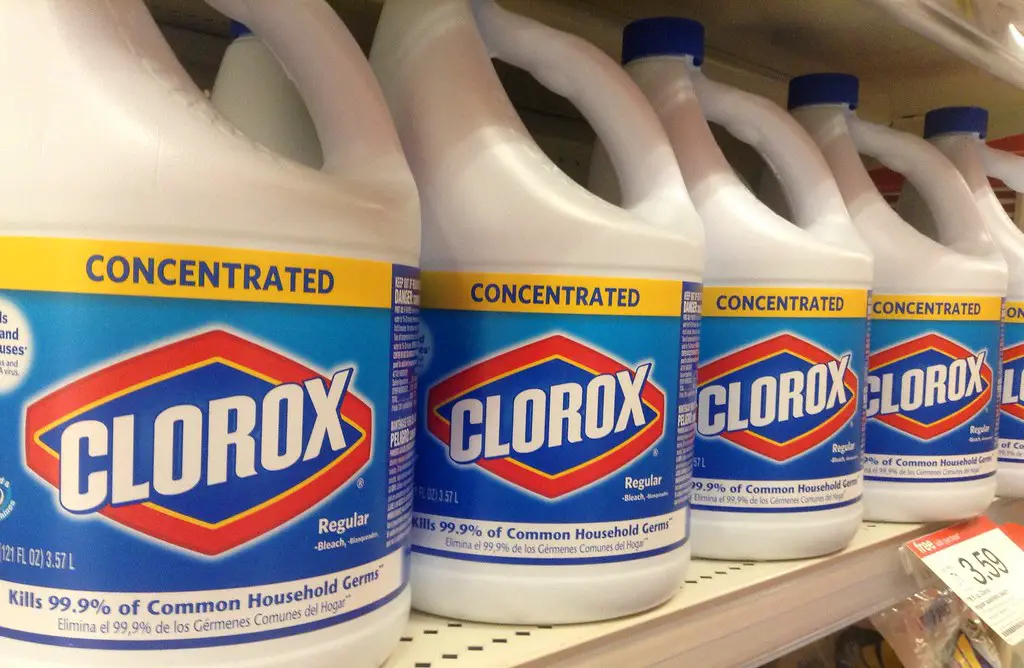
While bleach remains a powerful disinfectant, its use as an all-purpose cleaner has diminished among younger generations who often prefer specialized cleaning products. As noted by Good Housekeeping, while Boomers may have relied on bleach for everything from whitening laundry to sanitizing kitchen surfaces and bathrooms, there’s now a greater awareness of its potential to damage fabrics, irritate skin and lungs, and the availability of targeted sanitizing solutions. Many younger consumers opt for gentler, color-safe alternatives for laundry and specific disinfectants for different areas of the home.
The strong odor of bleach and the need for careful handling and dilution are also factors that contribute to its less widespread use among younger generations. Concerns about its environmental impact and the availability of “green” cleaning products have further shifted preferences. While Boomers may still trust bleach for its potent disinfecting properties, younger generations often seek out products that are perceived as more environmentally friendly and less harsh for everyday use.
3. Pine-Scented Cleaners
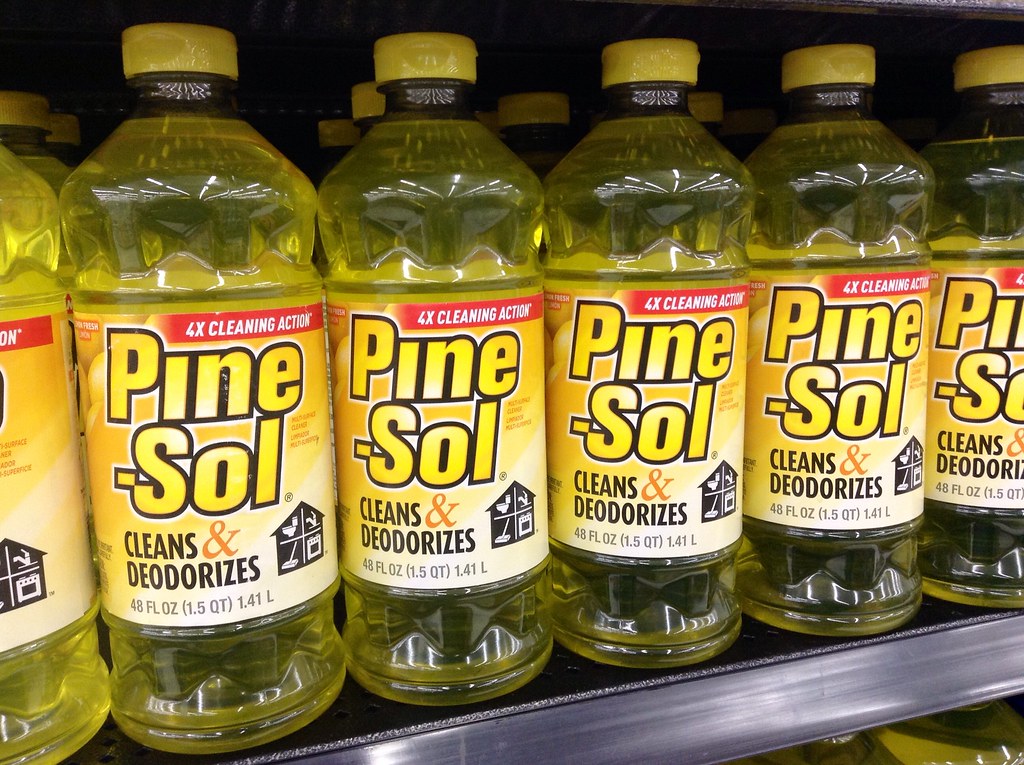
Pine-scented cleaners, with their distinctive woodsy fragrance, evoke a sense of cleanliness that was deeply ingrained in many Boomers’ households. According to Southern Living, the pine scent was heavily marketed as synonymous with a truly clean home. While the scent might still hold nostalgic appeal for some Boomers, younger generations often prefer a wider variety of fresh, floral, or citrus scents, or even unscented options. The strong pine aroma can sometimes be perceived as overpowering or old-fashioned by younger consumers.
The formulation of some older pine-scented cleaners may also contain ingredients that are less favored today due to environmental or health concerns. Younger generations tend to be more conscious of ingredient lists and may opt for products with more natural or plant-based formulas. While the association of pine with cleanliness is a strong one for many Boomers, it doesn’t hold the same universal appeal for younger consumers who have different sensory preferences and product priorities.
4. Powdered Laundry Detergent
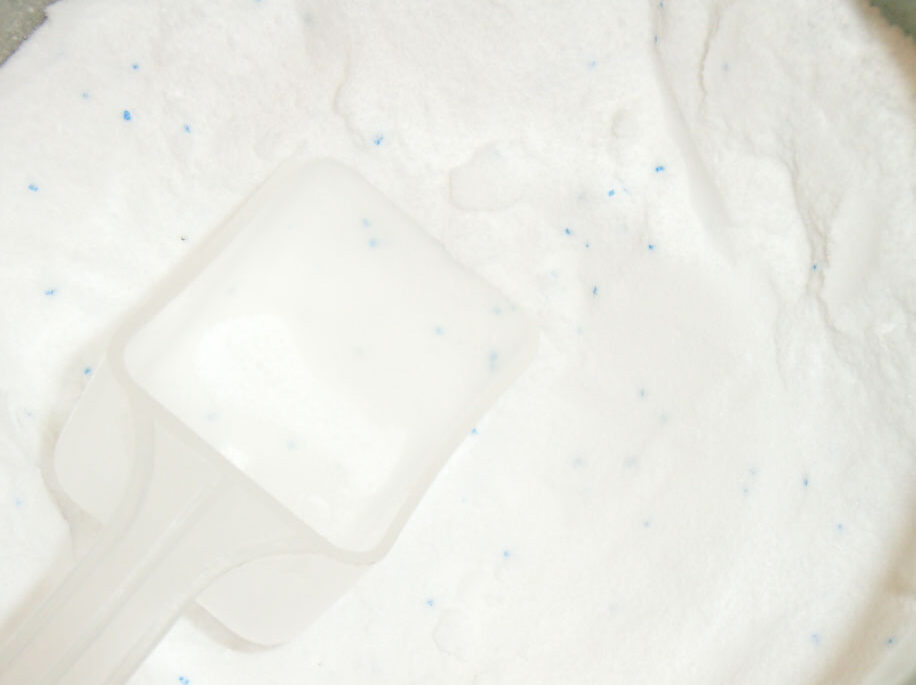
Powdered laundry detergent was the dominant form for many decades and remains a familiar and trusted option for many Boomers. As noted by O3 Waterworks, powdered detergents were praised for their cleaning power and cost-effectiveness. However, liquid detergents have gained significant popularity among younger generations due to their convenience (no dissolving required), pre-treating capabilities, and often perceived gentler formulas for fabrics. Powdered detergents can sometimes leave residue, especially in colder water, which is a concern for some younger consumers.
The bulkier packaging and potential for clumping of powdered detergents can also be less appealing to younger consumers who often value convenience and space-saving solutions. Liquid detergents, with their easy-to-pour formulas and often concentrated options, align more closely with the preferences of many younger individuals. While Boomers may still rely on the cleaning power and perceived value of powdered detergents, liquid formulas have largely taken over the market share among younger generations.
5. Bluing Liquid
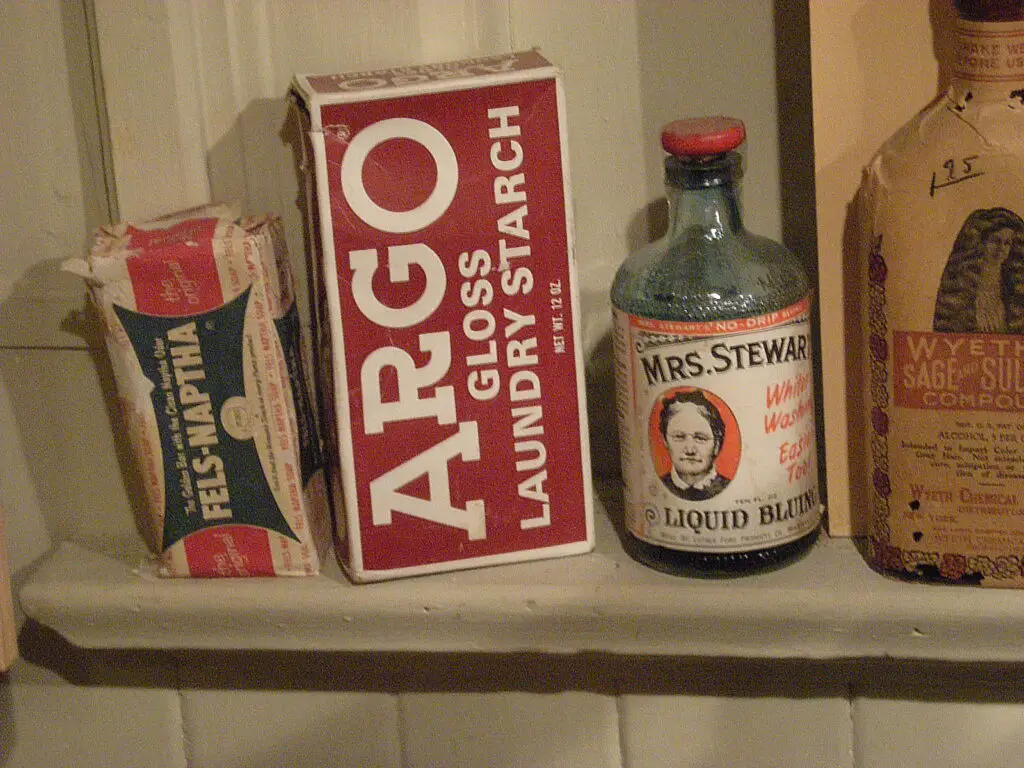
Bluing liquid, a product used to enhance the whiteness of fabrics, was a common laundry aid in previous generations, including the Boomer era, before modern detergents incorporated optical brighteners. This product worked by depositing a trace amount of blue pigment onto white fabrics, counteracting any yellowing and making them appear brighter and more vibrant. The process typically involved diluting the bluing liquid in water and then adding the garment during the rinse cycle of the wash.
However, with the significant advancements in detergent formulations over the decades, many of today’s laundry detergents already contain optical brighteners that achieve the same effect of enhancing whiteness. As a result, the need for a separate bluing agent has largely diminished, and it is now a product that many younger people have likely never encountered or even heard of. The shift in detergent technology has rendered bluing liquid largely obsolete for most contemporary laundry practices.
6. Mop and Bucket (Traditional)
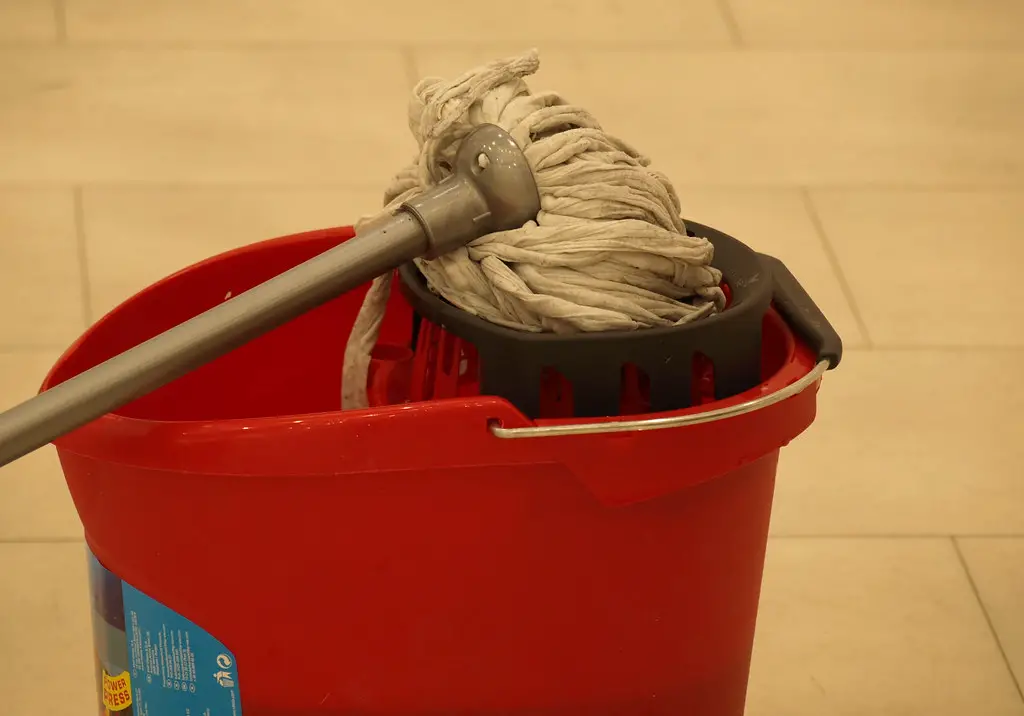
While the fundamental task of mopping floors remains a common cleaning chore across all generations, the traditional mop and bucket system, which requires manual wringing of a string or sponge mop and often leaves streaks on the floor, is less favored by younger generations. These individuals often opt for more convenient and arguably more effective alternatives that have emerged in recent years. The manual wringing process can be perceived as cumbersome and less hygienic compared to newer methods.
Younger consumers frequently gravitate towards flat mops that often feature microfiber pads, which are known for their superior cleaning ability and ease of rinsing or replacement. Spray mops, which have a built-in cleaning solution dispenser, also offer a more streamlined and less physically demanding approach to floor cleaning. The convenience and perceived efficiency of these modern mopping solutions have contributed to the decline in popularity of the traditional mop and bucket among younger generations.
7. Furniture Polish (Aerosol)
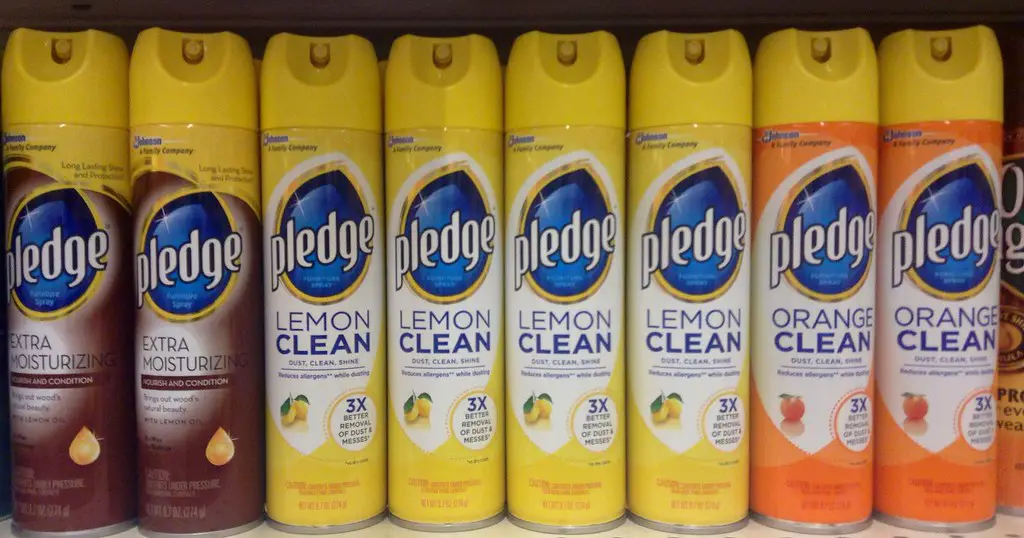
Aerosol furniture polish, characterized by its distinctive scent and convenient, quick application via a spray can, was a staple product for dusting and shining wood furniture in many Boomers’ households for decades. The ease of spraying a fine mist of polish onto surfaces and then wiping it away with a cloth made it a popular choice for maintaining the appearance of wooden furniture. The characteristic smell of these polishes often became associated with a freshly cleaned home.
However, in more recent times, concerns regarding the environmental impact of aerosol propellants and the increasing availability of more eco-friendly liquid furniture polishes in pump bottles have led to a decline in the widespread popularity of aerosol versions, particularly among younger consumers. Many younger individuals prioritize products with more sustainable packaging and formulations that are perceived as being less harmful to the environment. This shift in environmental awareness has influenced purchasing decisions in the realm of furniture care.
8. Window Cleaner (Blue Liquid in a Spray Bottle)
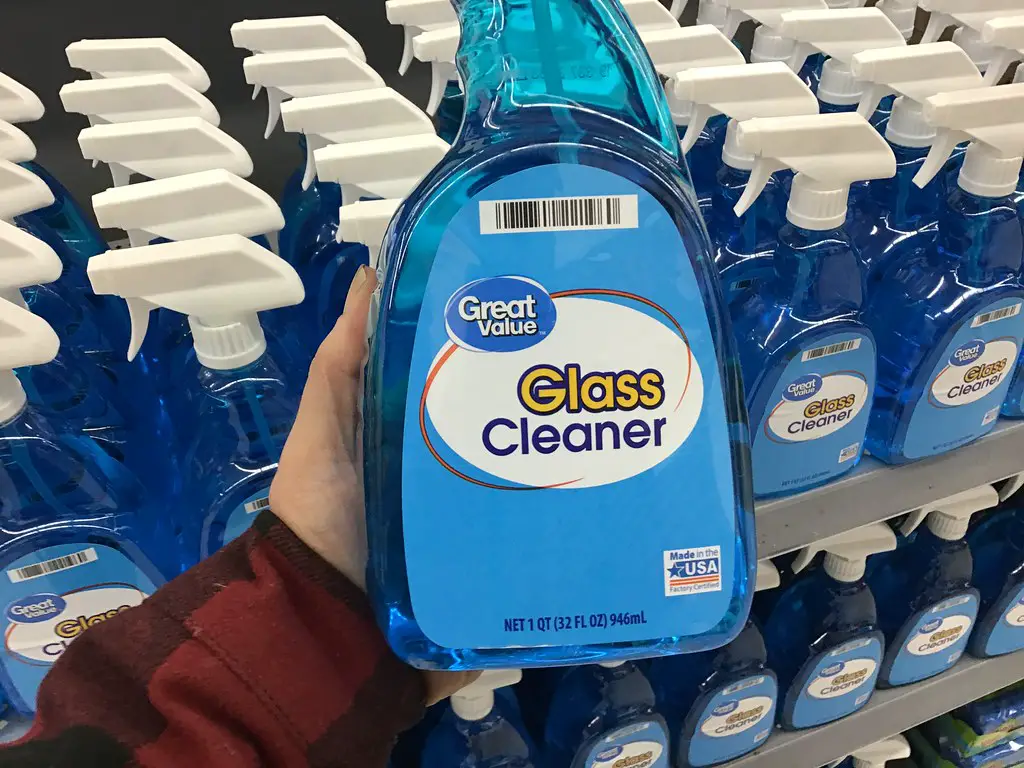
The iconic blue liquid window cleaner in a spray bottle remains a recognizable and widely used product for achieving streak-free shine on glass surfaces across generations. Its effectiveness and ease of use have contributed to its enduring popularity as a household staple for cleaning windows, mirrors, and other glass items. The distinct blue color has become almost synonymous with clean glass.
However, while this classic blue formula continues to be a popular choice, younger generations are often more open to exploring and trying various other brands and formulations of window cleaners that have emerged in the market. These alternatives may include eco-friendly options with plant-based ingredients or specialized formulas that promise even better streak-free results or additional benefits like anti-fog properties. The willingness to experiment with newer products has led to a less exclusive reliance on the traditional blue cleaner among younger consumers.
9. Oven Cleaner (Strong Fumes)
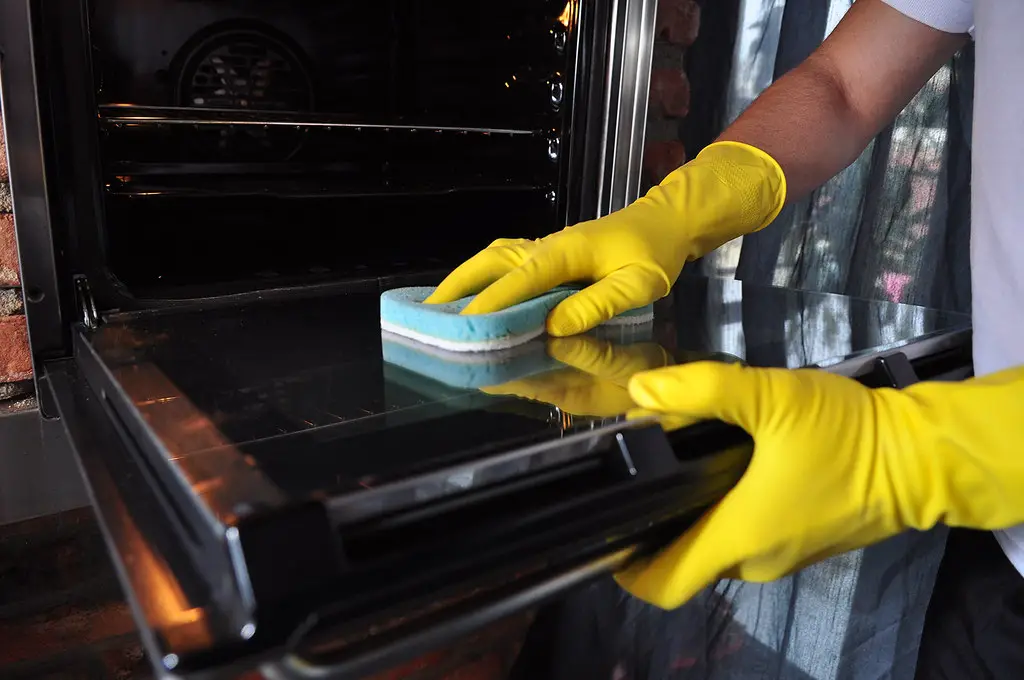
Older formulations of oven cleaner were widely recognized for their powerful ability to tackle baked-on grease and grime, a common and challenging cleaning task in the kitchen. However, these effective cleaners were also notorious for emitting strong and often unpleasant chemical fumes that could be irritating to the respiratory system and required careful ventilation during use. The trade-off between cleaning power and harsh fumes was a significant characteristic of these older products.
In more recent years, there has been a noticeable shift towards less caustic and more user-friendly oven cleaning solutions, and younger generations often gravitate towards these gentler alternatives. Many modern oven cleaners boast formulations with fewer harsh chemicals and reduced fumes, prioritizing a more comfortable cleaning experience. Additionally, the increasing prevalence of self-cleaning functions in modern ovens has further reduced the reliance on strong chemical cleaners for this task in many households.
10. Toilet Bowl Cleaner (In-Bowl Tablets)
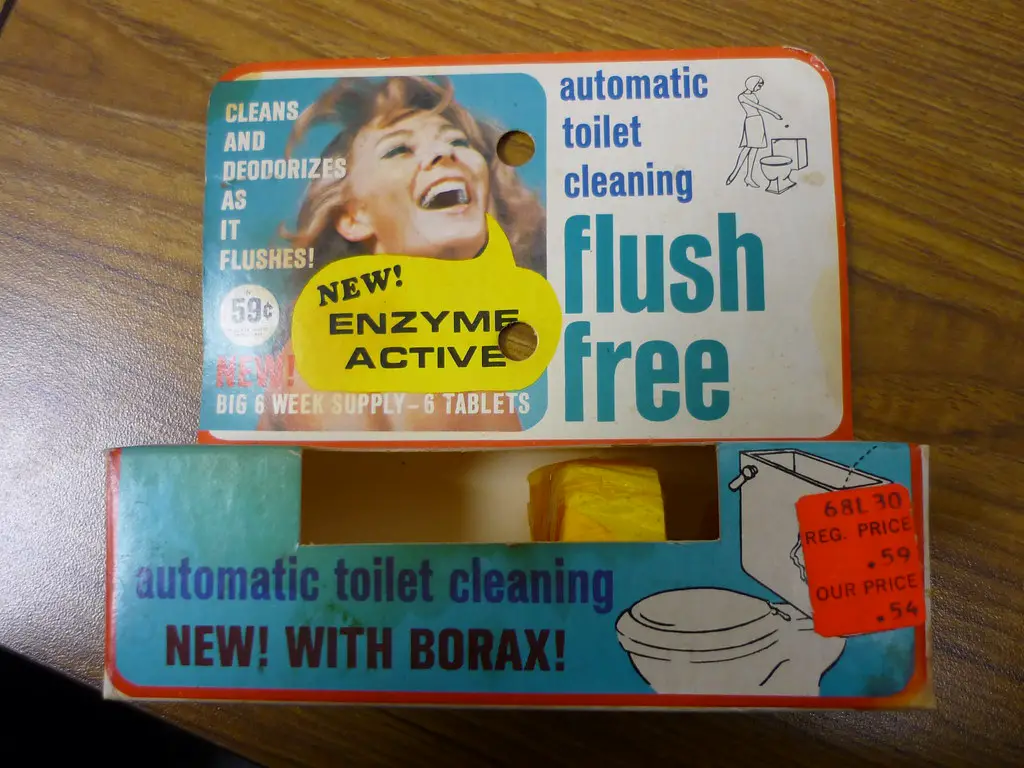
In-bowl tablets designed to slowly release cleaning agents into the toilet bowl water with each flush are a product that aims to provide continuous cleaning and freshening between manual cleanings. These tablets offer a degree of convenience by automating part of the toilet maintenance process. They were perhaps more heavily marketed and relied upon in previous generations for maintaining a relatively clean toilet bowl.
However, younger generations often express a preference for liquid toilet bowl cleaners that can be directly applied to coat the entire surface of the bowl, including under the rim, for a more thorough and immediate cleaning and disinfection action. The direct application of liquid cleaners allows for targeted cleaning of stains and build-up, which may be perceived as more effective than the gradual release of cleaning agents from a tablet. This preference for more direct cleaning methods has perhaps lessened the reliance on in-bowl tablets among younger consumers.
11. Dish Soap (Basic, Non-Concentrated)
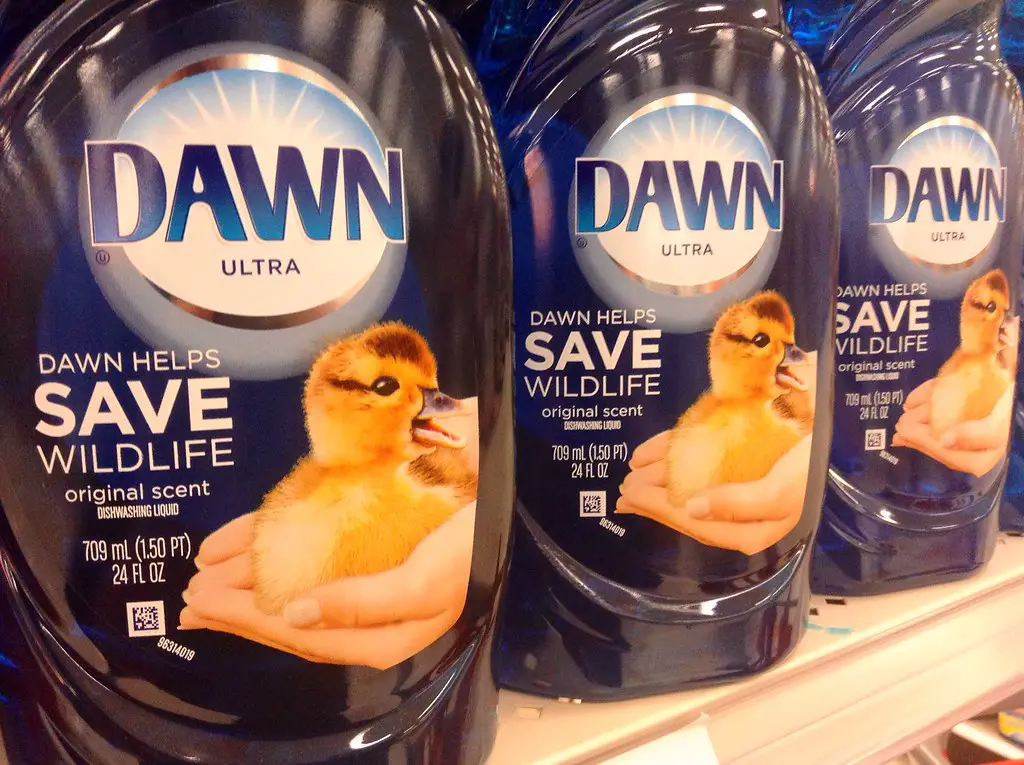
Older formulations of liquid dish soap were often less concentrated, meaning that a larger quantity of product was typically required to generate sufficient suds and effectively cut through grease and food residue on dishes. This necessitated more frequent repurchase of the product compared to today’s concentrated formulas. The cleaning power per volume was generally lower in these less concentrated soaps.
In contrast, younger consumers, often valuing efficiency and cost-effectiveness, frequently opt for ultra-concentrated dish soap formulas that require a significantly smaller amount of product to achieve the same or even better cleaning results. These concentrated soaps are often perceived as being more economical in the long run and also contribute to less plastic waste due to smaller packaging. The preference for concentrated formulas reflects a desire for efficiency and value in household cleaning products.
12. Rug Shampoo (Applied with a Brush)
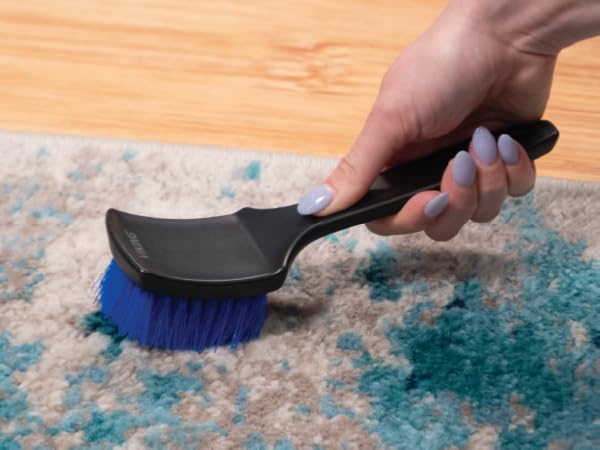
The traditional method of cleaning carpets and rugs using a liquid or powdered rug shampoo that was manually applied with a brush, scrubbed into the fibers, and then required vacuuming up the residue was a common practice for many years, including during the Boomer generation’s prime home-owning years. This process, while effective for deep cleaning, could be somewhat labor-intensive and time-consuming. It often involved moving furniture and allowing the carpets to dry thoroughly.
However, younger generations often lean towards more convenient and less physically demanding carpet cleaning solutions. These alternatives include professional carpet cleaning services that handle the entire process, as well as more readily available and user-friendly spot-cleaning sprays and portable carpet cleaning machines for addressing localized stains and spills. The desire for ease and speed in carpet care has likely contributed to a decline in the reliance on the traditional brush-applied rug shampoos.
13. Metal Polish (Specific to Silver or Brass)

Maintaining the shine and preventing tarnish on metal items, particularly silver and brass, was a more prominent household task in previous generations, often involving the regular use of polishes specifically formulated for these metals. Homes might have featured more extensive collections of silver serving ware or decorative brass items that required periodic polishing to maintain their luster. This was a routine part of household upkeep.
In contemporary households, particularly those of younger generations, there might be a lesser emphasis on owning and maintaining large collections of solid silver or brass items. Modern decor often incorporates a wider variety of metal finishes, and cleaning solutions might be more multi-purpose. Additionally, the preference for lower-maintenance materials has perhaps reduced the necessity for frequent, specialized metal polishing in many younger households.
14. Laundry Starch (Powdered)

Powdered laundry starch, used to stiffen fabrics and create a crisp finish, particularly on items like dress shirts and linens, was a more common laundry product in previous generations, including the Boomer era, when ironing was a more prevalent household chore. The process involved mixing the powdered starch with water to create a solution that was then applied to the fabric before ironing. This required an extra step in the laundry routine.
However, with the increasing popularity of wrinkle-resistant fabrics and the widespread availability of convenient spray starches that can be applied directly to garments before ironing, the use of powdered laundry starch has significantly declined, especially among younger generations. Spray starches offer a quicker and less involved method for achieving a crisp finish, aligning with the preference for convenience in modern laundry practices.
15. Mothballs
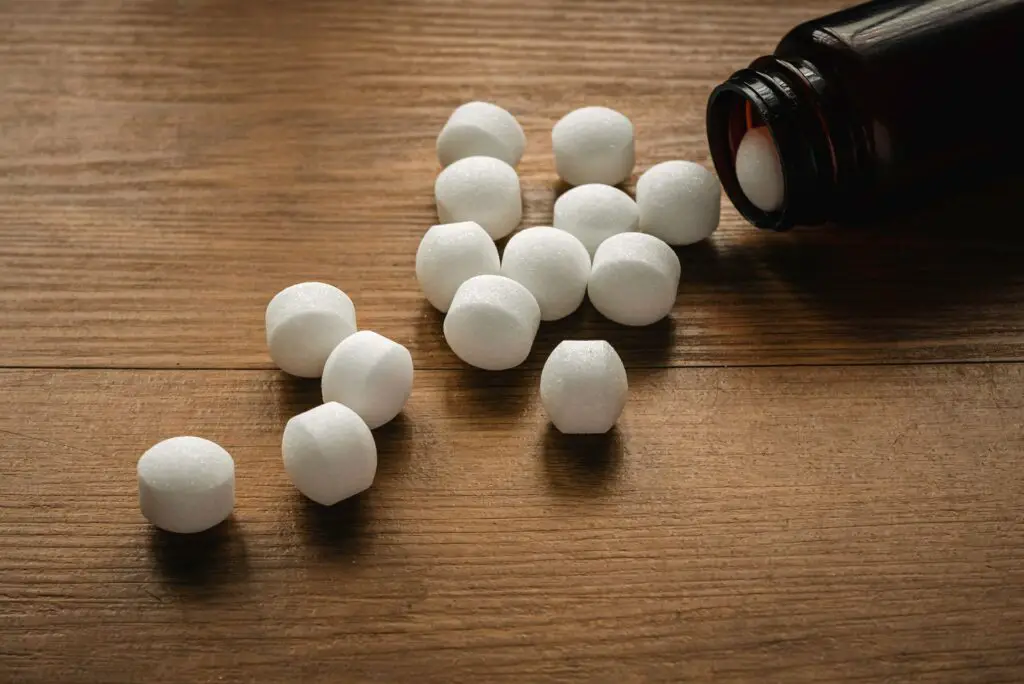
Mothballs, small balls or flakes of chemical insecticide with a distinct and often unpleasant odor, were a widely used and recognized solution for protecting stored clothing and fabrics from damage caused by moths and other fabric pests. These were commonly placed in closets, drawers, and storage containers to prevent infestation. The strong, lingering smell was a characteristic associated with their use.
However, in more recent times, particularly among younger generations, there has been a growing preference for alternative and less pungent methods of protecting stored clothing. These alternatives often include natural solutions like cedar blocks and rings, which emit a pleasant aroma known to deter moths, as well as lavender sachets and other fragrant, chemical-free options. The desire to avoid the strong odor and potential health concerns associated with mothballs has led to a shift towards these more natural and aromatic alternatives.
